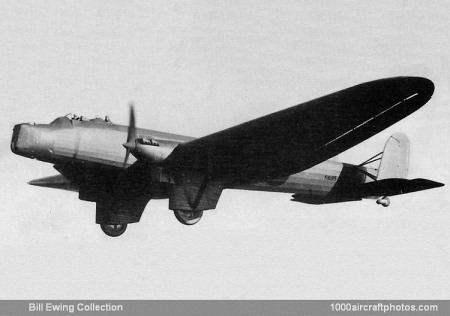04/30/2012. The Hendon heavy night-bomber was the first all-metal low-wing cantilever monoplane to go into squadron service with the RAF. This was in November 1936, when it entered service with No. 38 Squadron at Mildenhall, Suffolk. This squadron, the only one ever to be completely equipped with Hendons, later moved to Marham, where in June 1937 one of its flights was detached to form the nucleus of the new No. 115 Squadron. Hendons remained in service until supplanted in 1939 by Wellingtons.
Designed to Air Ministry Specification B. 19/27 (the same as the Handley Page Heyford biplane), the prototype (s/n K1695) made its first flight from Great West Aerodrome (now part of Heathrow Airport), London, on November 25, 1931, powered by two 460 hp Bristol Jupiter X radial engines. As shown in these site files photos, it had an open cockpit, and open nose, amidships and tail gunner positions, and carried a maximum bomb load of 1,660 lb (753 kg). This machine met with an accident, and in 1932 emerged again re-engined with two 480 hp Rolls-Royce Kestrel IIIS V-engines.
Described simply as a Fairey Night Bomber (it was not named Hendon until November 1934), it appeared among the new and experimental aircraft at the RAF Display the same year and its advanced design attracted a good deal of attention. Its enormous, deep-section cantilever wing and carefully streamlined landing gear gave it, indeed, a striking appearance, more especially as its contemporaries were mostly biplanes.
Production of the Hendon was to Specification 20/34, and between September 1936 and March 1937 a total of 14 (commencing with s/n K5085) was built for the RAF. An additional contract for 60 was later cancelled. The production version was designated Hendon II, and differed from the Hendon I in having Kestrel VI engines of increased power, an enclosed cockpit for the pilot and a nose turret in place of open front gunner's cockpit. Another refinement in the Hendon II was the installation of three-blade Fairey-Reed metal airscrews in place of the original two-blade wooden airscrews.
